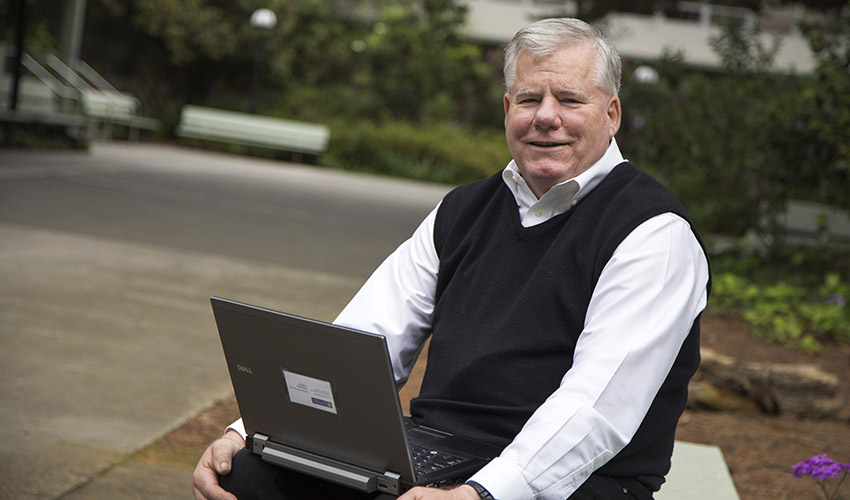Expert offers five tips for staying engaged while working remotely

John Sullivan teaches in San Francisco State University’s Lam Family College of Business.
SF State Professor of Management John Sullivan says workers can still make progress when stuck at home
The Bay Area’s recent shelter-in-place order and a statewide stay-at-home order, responses to the rapid spread of COVID-19, have marooned many workers at home. That’s made working remotely the new normal. But while doing your job from your couch in your pajamas might have sounded great a few months ago, many workers are finding it tougher than expected to stay focused.
One person who’s not surprised by that is San Francisco State University Professor of Management John Sullivan. He’s done extensive research on working remotely and knows the challenges it poses. One hurdle: Workers who can remain completely self-motivated are in the minority. “Others, who make up a majority, have to be watched and know that someone is looking over their shoulder to stay productive,” Sullivan said.
Another issue is that people working from home tend to be less creative because they’re missing those chance encounters with coworkers that spark innovation. “At Pixar, the bathrooms are strategically placed far from people’s desks to guarantee they’ll have those run-ins,” Sullivan said.
Of course, the whole point these days is to avoid running into people. Sullivan offers these five tips for staying productive while maintaining our physical distance.
1. Write “no response emails.” Eighty percent of emails go unread, Sullivan says. So if you’re sending an email that doesn’t require a response, try to convey the message in the subject line.
2. Find software that can help you stay on track and keep you organized. Sullivan recommends using customer relationship management software (CRM) because it sends helpful reminders about deadlines, manages time and can prioritize tasks. “If people have unlimited free time, they will take it. And so that’s where the CRM comes in. It will tell you, ‘Four hours have gone by.’ CRMs can literally track how much you type and see what you’re actually working on.”
3. Build trust with coworkers by getting personal. When you’re working remotely, you only see people’s faces via video. That can make it hard to build relationships, Sullivan says. Google does something called virtual coffee talks where people get together and have coffee while video-conferencing. “We’re taught to avoid talking about our lives, but Google found that that was one of the keys to building trust,” he said. “So as the manager, you have to be willing to ask people how their parents are dealing with the virus, etc.”
4. Use teleconferencing tools to team-build. Some companies have video game parties where they’ll play games online for a few hours. Others share recipes. People have to find a way to connect so that they develop empathy for one another. “You have to force that camaraderie,” Sullivan noted.
5. Work when you’re at your best. Best Buy had a program called “Results Only Work Environment” at its corporate headquarters. It’s a strategy that pays employees based on their output rather than the amount of time worked. “Maybe you went to college and your best ideas come at 2 a.m. Then work at 2 a.m. All they care about are results,” Sullivan said. If you have that flexibility, he says, use it to your advantage